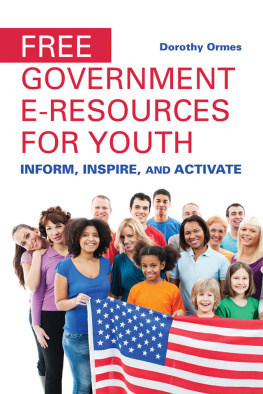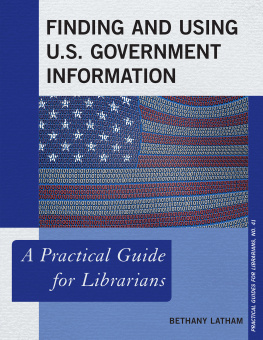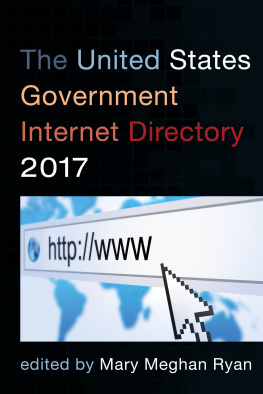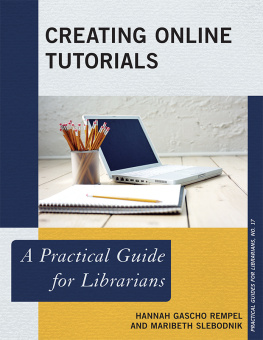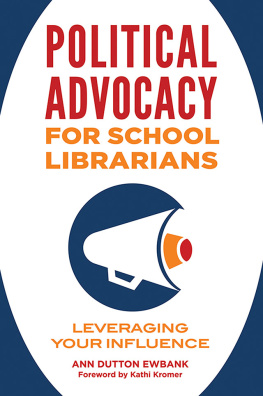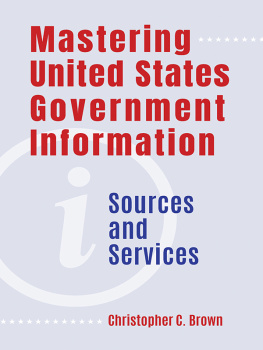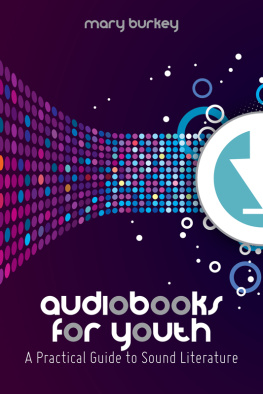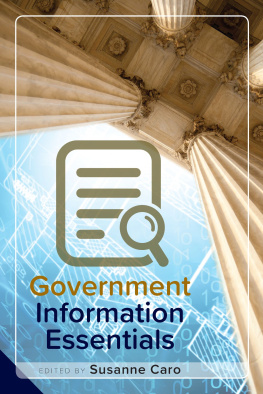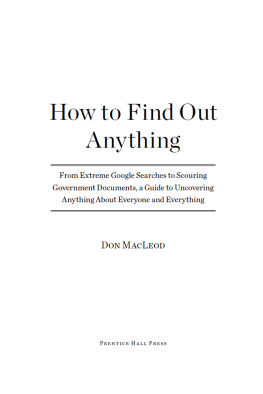Free Government e-Resources for Youth
Free Government e-Resources for Youth
Inform, Inspire, and Activate
Dorothy Ormes
Copyright 2016 by Dorothy Ormes
All rights reserved. No part of this publication may be reproduced, stored in a retrieval system, or transmitted, in any form or by any means, electronic, mechanical, photocopying, recording, or otherwise, except for the inclusion of brief quotations in a review, without prior permission in writing from the publisher.
Library of Congress Cataloging in Publication Control Number: 2016030070
ISBN: 978-1-4408-4131-6
EISBN: 978-1-4408-4132-3
20 19 18 17 16 1 2 3 4 5
This book is also available as an eBook.
Libraries Unlimited
An Imprint of ABC-CLIO, LLC
ABC-CLIO, LLC
130 Cremona Drive, P.O. Box 1911
Santa Barbara, California 93116-1911
www.abc-clio.com
This book is printed on acid-free paper 
Manufactured in the United States of America
Contents
As a professional storyteller, I have sense enough to know that the phrase government documents can make even a well-meaning audience of one glaze-eyed and fidgety. Government seems too complicated and depressing to contemplate and documents is such a very serious term for piles of paper that only an intrepid historian can love. Alas, this is the daily truth that many government information librarians face, yet a large number of them entered the profession in some strangely serendipitous way and are still at it 10, 20, 30, even 40 years later. I am one of them. I became a government documents librarian by default, am fairly new to the profession, havent even reached year 10, and Im hooked! Government information is messy, inscrutable, multifaceted, and, most of all, chaotic. Why do so many of us love it? And why would I want to bring this love to children?
I started working with government documents at the turn of the 21st century but did not become a bona fide government documents librarian until 2008. I had started as a part-time government documents technician at Southern Oregon University (SOU) with 32-year government documents veteran Deborah Hollens. I learned that the government documents department in a small university is a library within a library where it is possible to learn all aspects of librarianship. After I finished my MLS, I stayed at SOU as a temporary technical services librarian for three years creating metadata for our digitized collection of regional environmental government documents. Deborah encouraged me to apply for government documents positions and, in 2008 I found a position as Government Documents and Maps Librarian at New Mexico State University (NMSU) in Las Cruces, New Mexico. By that time I had a deeper appreciation of government information resources and had done some basic library instruction, a role that I really enjoyed. NMSU is a Land Grant University with a 70 percent depository collection dating back to 1907, much larger than the collection at SOU. I was called upon to teach specialized sessions in government information for undergraduates as well as upper division classes. I also taught a 3-credit information literacy class that included information about government documents. It was overwhelming to discover the depth and breadth of the collection and face the many decisions I made over the three years I was there. It also gave me an opportunity to delve into a truly historical collection and find the fascinating gems that made me want to share it all with children and young adults.
My first opportunity was for a celebration of the New Deal, Soul of the People, funded by the National Endowment of the Arts and sponsored by the American Library Association in 2009. This was a nationwide outreach program to inform people about the New Deal Writers Project collection, a rich compendium of historical and cultural resources. At my library, I was tasked with finding the documents in my collection that supported the project, creating displays and participating in the culminating community event, performing stories from the Writers Project. Of course, as a storyteller, I couldnt resist the final challenge of bringing some of these oral histories back to life and I collaborated with several local amateur storytellers to do so. We interpreted several stories for the community event in an hour-long performance titled Slaves, Sidekicks and Healers: Womens Stories Collected by the WPA (Ormes, 2010, 17). The real gold was in the documents that I was able to find, both in my large hard copy collection and online at the Library of Congress American Memory website. The opportunity to delve deeply into American Memory and look for oral histories was thrilling and awe inspiring. It was really a lesson in finding the amazing materials that are preserved by our federal government. The ability to study these digitized documents from a turbulent period in our history when the government employed artists and writers to take down and commemorate our nations cultural heritage was a privilege Ill never forget and I hope to inspire younger people to find the same appreciation.
The following year, in 2010, I had the pleasure of creating a centennial celebration for our government documents department. We had been a federal depository since 1907 and were overdue for the celebration. This time my inspiration came from a congressional hearing. Since NMSU has a very active military and National Guard program, I wanted to find a way to honor the young men and women and highlight the military, especially the contribution of Hispanics to the military. My opportunity came when, while doing a random search, I discovered a 2008 congressional hearing, Immigration Needs of Americas Fighting Men and Women , which contained testimony from New Mexico native General Edward D. Baca, the first Hispanic to serve as Chief of the National Guard, appointed by President Clinton (United States, 2008, 23). When I first contacted General Baca for a speaking engagement, I had no idea that he would tell us a compelling story about Hispanic prisoners of war in the Pacific during World War II that would bring us all to tears. As part of the celebration I also hosted presentations by NMSU history professors and invited social studies classes from the local schools to come and explore our government documents collections. When I saw how fascinated the students were with some of the items in my collection, it seemed a shame not to find a way to continue to promote these rich resources to young people.
In 2011 I returned to Southern Oregon University as Government Information and Instruction Librarian. Since my return I have had the opportunity to work with undergraduates on their preliminary research projects and help them find government information sources. Ive piloted an iPad program teaching with iPads in the government stacks area and introducing free government apps and mobile sites to students. In the process of researching these applications, I have discovered some wonderful resources that can work for both undergraduates and K12 students. I am the librarian for several subject specialties in the arts and humanities and have extended my teaching about the richness of government information to those disciplines whenever possible.
Government information is an all-encompassing learning tool that addresses multiple disciplines and can spark the imagination at any age. This book is a culmination of my recent research and represents a way for me to highlight the many resources that I have found. My purpose is to introduce the reader to the incredible breadth and depth of government information and to show that it can be an exciting tool for educators at all levels of curriculum.

